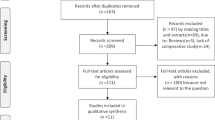Abstract
Background
The purpose of this study is to evaluate recently reported outcomes for treatment options for proximal cholangiocarcinoma (CCA).
Materials and methods
Standard evidence based practice techniques were used to formulate a question, search, appraise and evaluate the retrieved literature. Our question was “In patients with CCA, how do stenting alone, stenting in addition to brachytherapy (BT) or photodynamic therapy (PDT), resection and orthotopic liver transplantation with neoadjuvant chemoradiation (OLT) compare for long-term survival?
Results
Level 1b survival data was available for stenting alone (179 days), BT and metal stenting (388 days) and PDT with plastic stenting (493 days) and no survival difference was evident with metal vs. plastic stenting or unilateral vs. bilateral stenting. Five year survival data (level 3) was available for OLT (80%), formally curative trisegmentectomy with or without portal vein resection (72% and 52%) and hepatectomy (18%–23%).
Conclusion
All patients with proximal CCA should be reviewed by a multidisciplinary team to determine appropriate treatment. For unresectable CCA, patients should be assessed for OLT with neoadjuvant chemoradiation, while those who are unsuitable would appear to have the longest survival with PDT. Extended resection in operable candidates may improve survival over right or left hepatectomy but increased perioperative mortality is a consideration.


Similar content being viewed by others
References
Staunton M (2007) Evidence-based radiology: steps 1 and 2-asking answerable questions and searching for evidence Radiology 242:23–31
Dodd JD (2007) Evidence-based practice in radiology: steps 3 and 4-appraise and apply diagnostic radiology literature Radiology 242:342–354
Guyatt GH, Sackett DL, Cook DJ (1994) Users’ guides to the medical literature. II. How to use an article about therapy or prevention. B. What were the results and will they help me in caring for my patients? Evidence-Based Medicine Working Group JAMA 271:59–63
Halligan S, Altman DG (2007) Evidence-based practice in radiology: steps 3 and 4-appraise and apply systematic reviews and meta-analyses Radiology 243:13–27
Maher MM, Hodnett PA, Kalra MK (2007) Evidence-based practice in radiology: steps 3 and 4-appraise and apply interventional radiology literature Radiology 242:658–670
Guyatt GH, Sackett DL, Cook DJ (1993) Users’ guides to the medical literature. II. How to use an article about therapy or prevention. A. Are the results of the study valid? Evidence-Based Medicine Working Group JAMA 1993 270:2598–2601
De Palma GD, Galloro G, Siciliano S, Iovino P, Catanzano C (2001) Unilateral versus bilateral endoscopic hepatic duct drainage in patients with malignant hilar biliary obstruction: results of a prospective, randomized, and controlled study Gastrointest Endosc 2001 53:547–553
Kaassis M, Boyer J, Dumas R, et al. (2003) Plastic or metal stents for malignant stricture of the common bile duct? Results of a randomized prospective study. Gastrointest Endosc 2003 57:178–182
Valek V, Kysela P, Kala Z, Kiss I, Tomasek J, Petera J (2007) Brachytherapy and percutaneous stenting in the treatment of cholangiocarcinoma: a prospective randomised study Eur J Radiol 62:175–179
Ortner ME, Caca K, Berr F, et al. (2003) Successful photodynamic therapy for nonresectable cholangiocarcinoma: a randomized prospective study Gastroenterology 125:1355–1363
Rea DJ, Heimbach JK, Rosen CB, et al. (2005) Liver transplantation with neoadjuvant chemoradiation is more effective than resection for hilar cholangiocarcinoma Ann Surg 242:451–458; discussion 458–461
Neuhaus P, Jonas S, Settmacher U, et al. (2003) Surgical management of proximal bile duct cancer: extended right lobe resection increases resectability and radicality Langenbecks Arch Surg 388:194–200
Author information
Authors and Affiliations
Corresponding author
Rights and permissions
About this article
Cite this article
Killeen, R.P.M., Harte, S., Maguire, D. et al. Achievable outcomes in the management of proximal cholangiocarcinoma: an update prepared using “evidence-based practice” techniques. Abdom Imaging 33, 54–57 (2008). https://doi.org/10.1007/s00261-007-9312-3
Published:
Issue Date:
DOI: https://doi.org/10.1007/s00261-007-9312-3




